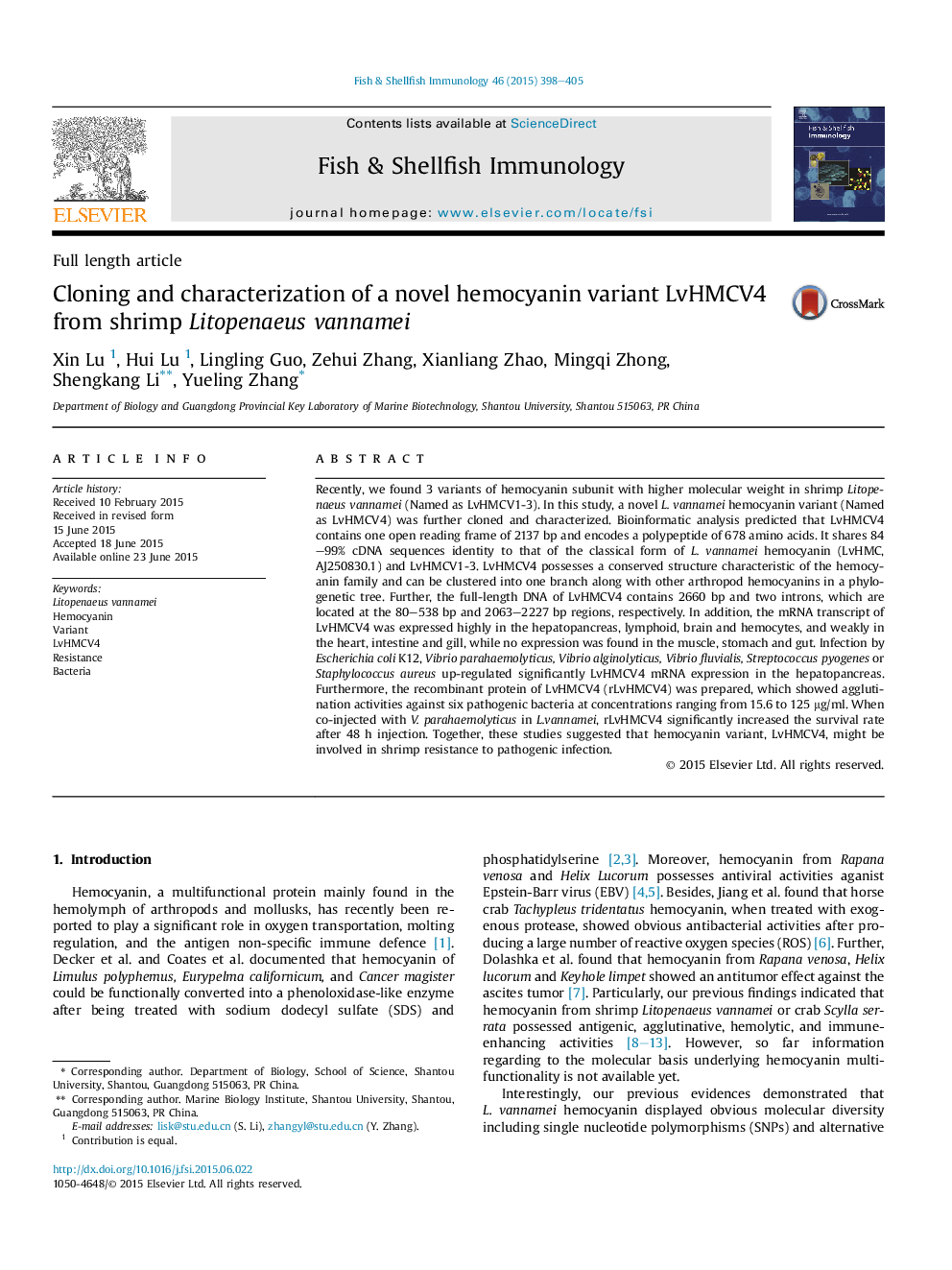| Article ID | Journal | Published Year | Pages | File Type |
|---|---|---|---|---|
| 2431167 | Fish & Shellfish Immunology | 2015 | 8 Pages |
•We found a novel hemocyanin variant in Litopenaeus vannamei (LvHMCV4).•It displayed a conserved structure characteristic of the hemocyanin family.•The LvHMCV4 possessed obvious resistance to pathogenic infection in vitro and in vivo in shrimp.
Recently, we found 3 variants of hemocyanin subunit with higher molecular weight in shrimp Litopenaeus vannamei (Named as LvHMCV1-3). In this study, a novel L. vannamei hemocyanin variant (Named as LvHMCV4) was further cloned and characterized. Bioinformatic analysis predicted that LvHMCV4 contains one open reading frame of 2137 bp and encodes a polypeptide of 678 amino acids. It shares 84–99% cDNA sequences identity to that of the classical form of L. vannamei hemocyanin (LvHMC, AJ250830.1) and LvHMCV1-3. LvHMCV4 possesses a conserved structure characteristic of the hemocyanin family and can be clustered into one branch along with other arthropod hemocyanins in a phylogenetic tree. Further, the full-length DNA of LvHMCV4 contains 2660 bp and two introns, which are located at the 80–538 bp and 2063–2227 bp regions, respectively. In addition, the mRNA transcript of LvHMCV4 was expressed highly in the hepatopancreas, lymphoid, brain and hemocytes, and weakly in the heart, intestine and gill, while no expression was found in the muscle, stomach and gut. Infection by Escherichia coli K12, Vibrio parahaemolyticus, Vibrio alginolyticus, Vibrio fluvialis, Streptococcus pyogenes or Staphylococcus aureus up-regulated significantly LvHMCV4 mRNA expression in the hepatopancreas. Furthermore, the recombinant protein of LvHMCV4 (rLvHMCV4) was prepared, which showed agglutination activities against six pathogenic bacteria at concentrations ranging from 15.6 to 125 μg/ml. When co-injected with V. parahaemolyticus in L.vannamei, rLvHMCV4 significantly increased the survival rate after 48 h injection. Together, these studies suggested that hemocyanin variant, LvHMCV4, might be involved in shrimp resistance to pathogenic infection.
